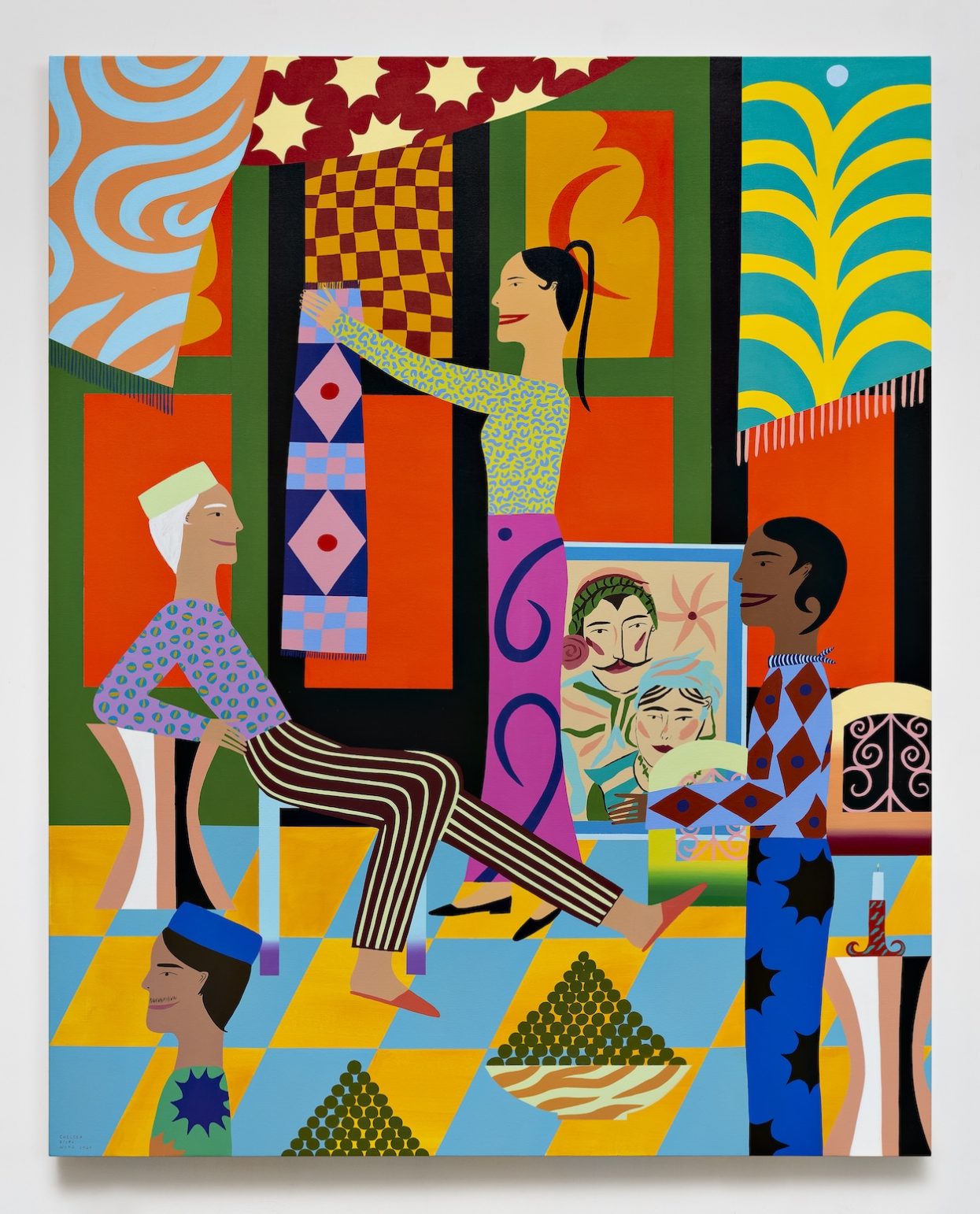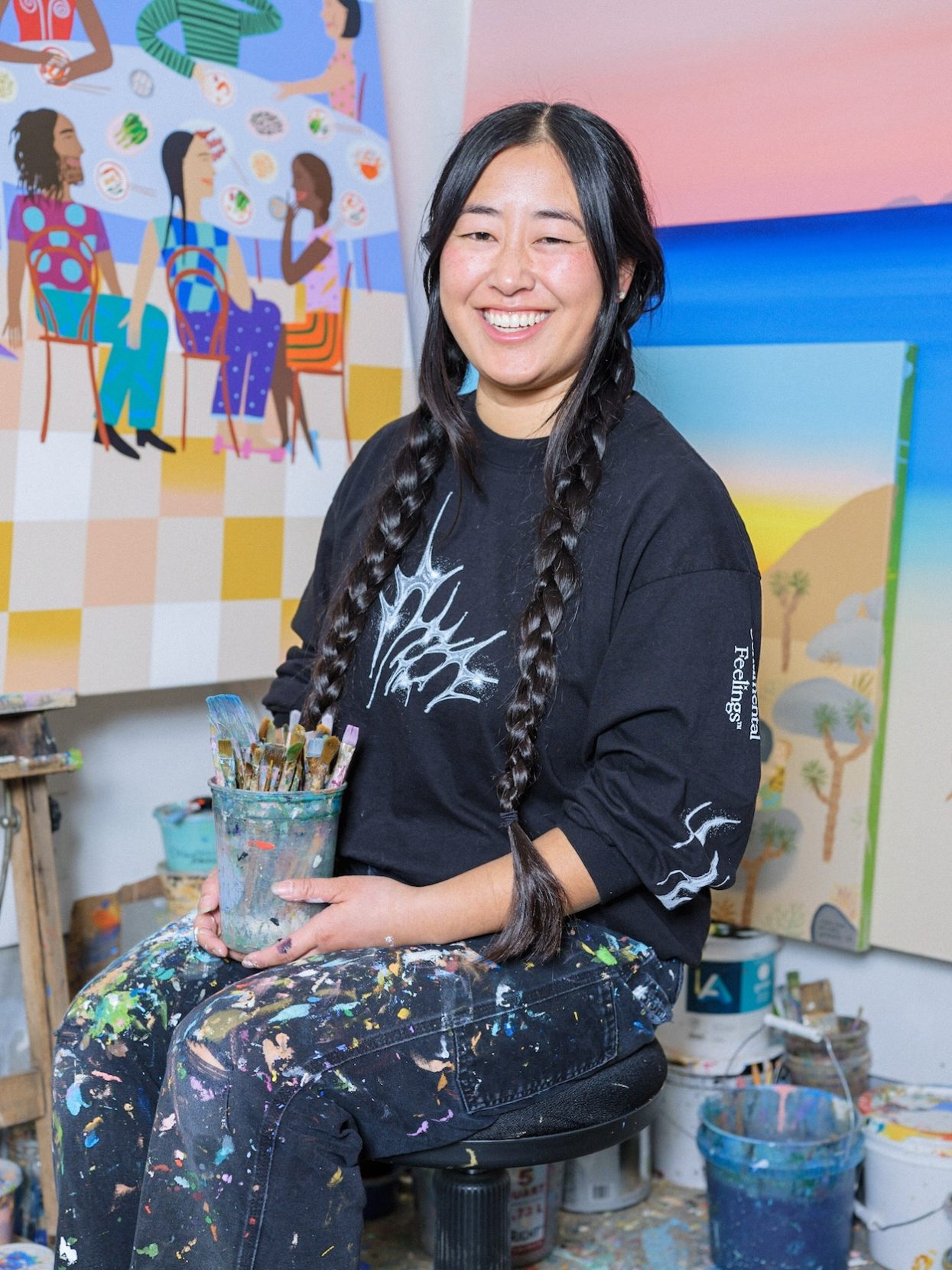Here, we ask an artist to frame the essential details behind one of their latest works.
Bio: Chelsea Ryoko Wong, 38, San Francisco (@chelsearwong)
Title of work: A Work That Outlives Me (2024).
Where to see it: “Nostalgia for the Present Tense” at Jessica Silverman (621 Grant Ave, San Francisco) until September 7.
Three words to describe it: Rhythmic, vibrant, tuned.
What was on your mind at the time: I had just gotten back from Tunisia and was reflecting on my time spent there; the vibrancy of the souks, the sounds, the scents and atmosphere in the air. Tunis, the capital of Tunisia, is an interesting place, situated in North Africa and on the Mediterranean Sea, it’s a melting pot of cultures that at times felt elusive and mysterious. Often compared to and yet not quite as intense as Morocco, I found the city to be an enticingly laid-back visual and cerebral feast.
Because this last year I’ve also been cycling through existential dread, I wanted to live presently and in the moment in Tunis. This painting captures that moment, a marker of time, this year, this point in our lives, where several strangers intersected briefly and by chance. I read that the word “Tunis” could be derived from the Berber root ens, which means to pass the night. I like to think of this painting that way—an ode to impermanence. The small painting within the painting was a dusty old relic I saw hanging in a tea house and its inclusion in this work brings new life to the original, giving spirit to works that outlive us.


